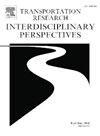Norwegians’ preferences for automated vehicles
IF 3.9
Q2 TRANSPORTATION
Transportation Research Interdisciplinary Perspectives
Pub Date : 2025-06-17
DOI:10.1016/j.trip.2025.101493
引用次数: 0
Abstract
The present study predicts Norwegians’ preferences for automated vehicles (AVs). We contribute to the state of the art of AV studies by identifying the relative importance of different predictors including demographic, socioeconomic, travel attributes, and psychological factors (i.e., the technology acceptance model (TAM), the theory of planned behaviour (TPB), personal innovativeness, and risk perception) in a Nordic country. A stratified random sample of Norwegians (n = 1000) was used as data in an artificial neural network. The findings show that (1) most people prefer partially AVs followed by high level AVs and conventional vehicles, (2) psychological factors have a greater influence on AV preferences compared to demographic, socioeconomic, and travel attributes, and (3) the five most important predictors of AV preferences are perceived ease of use of high level AVs (importance (i) = 100 %), subjective norm (i = 63.1 %), innovativeness (i = 59.9 %), attitudes towards high level AVs (i = 45.5 %), and perceived usefulness (i = 39.2 %). Policies and AV promotion could be based on components in the TAM and the TPB. Norwegians’ personal beliefs and social norms regarding usefulness, efficiency, and ease of driving with high level AVs can to a large extent positively influence their preferences to use AVs with a high level of automatisation. Norwegians seem to be ready for a transition to high level AVs regardless of their age, gender, education, or income. This latter finding implies that AV promotion in Norway can rely on broad nudging strategies aimed at all licensed drivers, rather than targeting specific demographics.
挪威人对自动驾驶汽车的偏好
目前的研究预测了挪威人对自动驾驶汽车(av)的偏好。我们通过确定北欧国家不同预测因素的相对重要性,包括人口统计、社会经济、旅行属性和心理因素(即技术接受模型(TAM)、计划行为理论(TPB)、个人创新和风险感知),为AV研究的最新水平做出贡献。挪威人的分层随机样本(n = 1000)被用作人工神经网络中的数据。研究结果显示,(1)大多数人喜欢部分AVs后跟高度AVs和传统汽车,(2)心理因素有更大的影响力AV偏好与人口相比,社会经济,和旅游属性,和(3)AV偏好的五个最重要的因素是感知的易用性高水平AVs(重要性(i) = 100%),主观规范(i = 63.1%)、创新(i = 59.9%),对高水平的态度AVs (i = 45.5%),感知有用性(i = 39.2%)。政策和AV推广可以基于TAM和TPB中的组件。挪威人对高水平自动驾驶汽车的实用性、效率和易用性的个人信念和社会规范在很大程度上积极影响了他们对高自动化水平自动驾驶汽车的偏好。挪威人似乎已经准备好过渡到高水平的自动驾驶汽车,无论他们的年龄、性别、教育程度或收入如何。后一项发现表明,挪威的自动驾驶推广可以依靠针对所有有执照司机的广泛推动策略,而不是针对特定的人口统计数据。
本文章由计算机程序翻译,如有差异,请以英文原文为准。
求助全文
约1分钟内获得全文
求助全文
来源期刊

Transportation Research Interdisciplinary Perspectives
Engineering-Automotive Engineering
CiteScore
12.90
自引率
0.00%
发文量
185
审稿时长
22 weeks
 求助内容:
求助内容: 应助结果提醒方式:
应助结果提醒方式:


